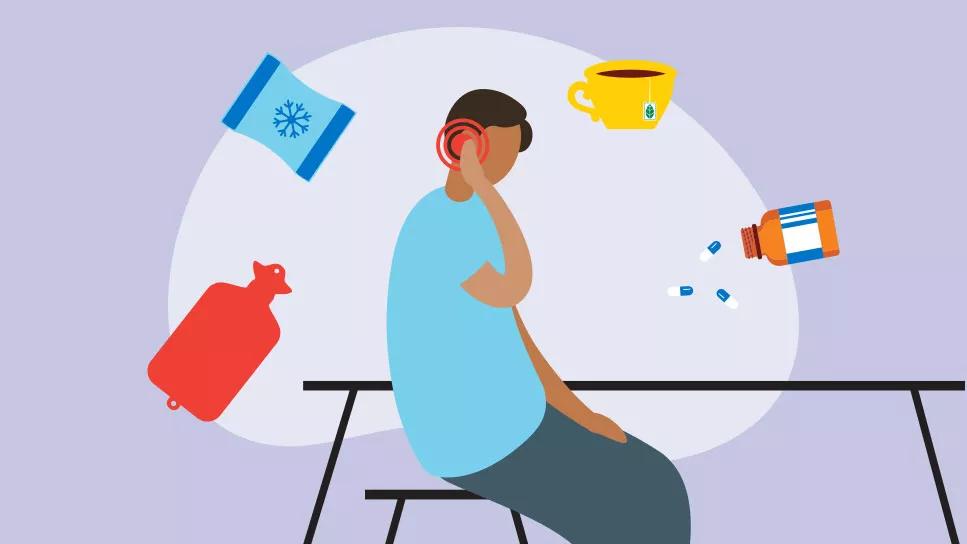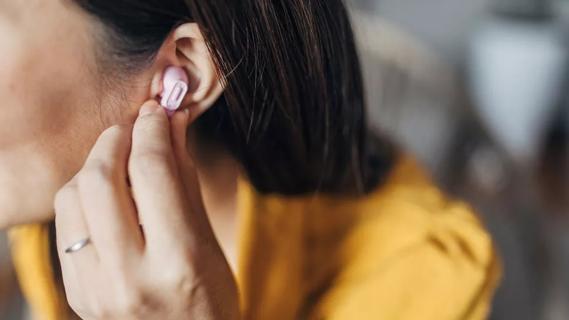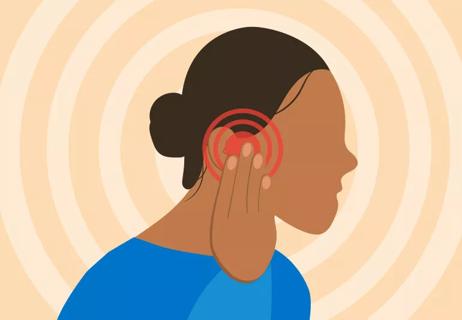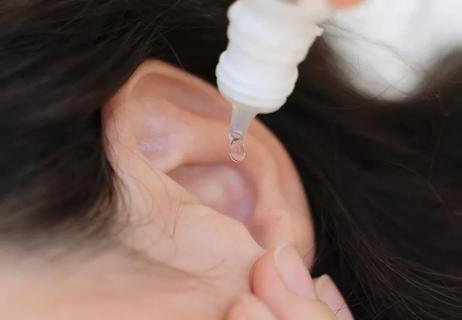Not all ear infections need antibiotics — cold and warm compresses and changing up your sleep position can help

Your kiddo is tugging their ear. Again. Or maybe you’re the one dealing with ear pain, pressure or muffled hearing.
Advertisement
Cleveland Clinic is a non-profit academic medical center. Advertising on our site helps support our mission. We do not endorse non-Cleveland Clinic products or services. Policy
No matter the age, ear infections are one of those illnesses that have you searching for relief in all kinds of places.
The good news is that most ear infections clear up on their own. That’s right. Not all ear infections need antibiotics to clear them up.
And even better news, there are some steps you can take at home to relieve the discomfort.
“There are several home remedies for earaches,” says otolaryngologist Anh Nguyen-Huynh, MD. “I suggest trying home remedies for the first two or three days if symptoms are mild.”
Any longer than that and it’s time to consider seeing a healthcare provider to see if antibiotics or other treatments are needed.
Dr. Nguyen-Huynh shares some go-to home remedies for ear infections that work. And — just as important — what to avoid.
Having that nagging pain in your ear can be uncomfortable, but there are several home remedies that can help relieve the pain and get you back on track.
Earaches often come on the heels of a respiratory infection, like a cold. That’s because contagious illnesses can irritate your ear canals (also called eustachian tubes) and cause swelling and fluid buildup in your ears.
So, managing your cough and cold symptoms can go a long way toward improving an earache.
Advertisement
Try home remedies like:
Some people swear by heat to manage the pain of an ear infection. Some people prefer things a little cooler.
Actually, they’re both right.
Heat will encourage the muscles around your ear canal to relax and let fluids flow better. Ice can dull your pain and reduce inflammation.
For best results, try alternating between a cold and warm compress every 30 minutes to get the benefits of both.
When using heat, make sure it’s not too hot to burn. And wrap cold compresses in a towel to keep the cooling effects from being too intense.
Pain relievers like ibuprofen (Advil® or Motrin®) and acetaminophen (Tylenol®) work as advertised — they can help take the edge off pain, including pain from an ear infection.
You may find that you benefit even more from alternating doses of ibuprofen and acetaminophen to take advantage of the pain-relieving effects of each.
If you’re taking other medications for other symptoms associated with your ear infection, like a decongestant, be careful about mixing medications. Some medications already include a pain reliever. So, taking more on top of that can be dangerous.
Read your medication labels carefully to make sure you’re using the proper dosage.
Getting plenty of sleep is important to managing any illness. And ear infections are no different.
But how you sleep can affect ear pain.
If your ear pain is limited to one ear, try to sleep on your other side. Try propping up your head on two or more pillows, so your affected ear is higher than the rest of your body. That will help encourage fluid to drain. (Yay, gravity!)
If both your ears are affected, you may find that sleeping on your back may be more comfortable.
When you have an ear infection or earache, the muscles around your ear canal can swell. That adds more pressure to your ears — and more pain.
Help relieve those tense muscles and ease the pressure by giving your neck a little workout if it feels good.
Try:
With its anti-inflammatory properties, ginger is a natural remedy that may help reduce swelling.
“Some people find relief from ear pain by applying a few drops of ginger juice around their outer ear,” Dr. Nguyen-Huynh notes. “Be careful, though, not to allow it to go into the actual ear canal.”
Advertisement
A few drops of hydrogen peroxide can help clean buildup and germs from your ears.
Here’s how to try it:
You may hear advice about other home remedies for ear infections that some people swear by. But not all remedies are created equal.
Dr. Nguyen-Huynh advises avoiding these at-home remedies for ear infections.
Be it garlic, tea tree or live — some people swear by putting oil in the ear to help with ear infections.
Some natural oils may be touted for their antimicrobial properties — that means they’re thought to have some ability to kill bacteria, viruses and fungi.
But Dr. Nguyen-Huynh says oils aren’t likely to get to the source of the problem. That’s particularly the case if you’re dealing with an inner-ear infection or a middle-ear infection. Oils likely won’t travel far enough into your ear to help. And, what’s more, even if they were able to slip their way in, they haven’t been proven to be safe or effective in clearing up ear infections.
Advertisement
Dr. Nguyen-Huynh also recommends avoiding over-the-counter numbing drops, which use benzocaine to numb the pain and antipyrine to help to decrease the pain and inflammation. “The effect is very brief, and sometimes it does the opposite and stings the ear.”
Home remedies may do the trick for some ear infections. But they may not always be effective.
Dr. Nguyen-Huynh advises seeing a healthcare provider for an ear infection if:
Some ear infections are more stubborn than others and may need a course of antibiotics to get you feeling better.
And sometimes, what you think to be an ear infection is actually an ache that comes from something other than an infection altogether.
“Other common conditions like temporomandibular joint dysfunction (TMJ), can masquerade as earache infections,” Dr. Nguyen-Huynh says. “If you have ear pain along with trouble chewing, talking or yawning, then you should see a dentist or TMJ expert to be sure you’re treating the right condition.”
Advertisement
No one wants to deal with ear infection pain any longer than they have to. So, try recommended home remedies. Get rest. Drink plenty of fluids. And see a healthcare provider if you’re not getting better.
Learn more about our editorial process.
Advertisement

This dangerous practice can cause burns or a ruptured eardrum, and can make earwax blockages worse

You can find sweet relief by swallowing, yawning and doing specialized maneuvers

Yes, ear pain can result from seasonal allergies, causing even more issues

Turning your head to the side and pulling your ear up and back is one common tactic for relief

Ear plugs, bathing caps, hydrogen peroxide and hair dryers can all help keep ears clean and dry

Care for your ears by steering clear of cotton swabs, taking precautions in loud settings and seeking medical help when needed

Ear infections can be painful, but essential oils may make the problem worse

How to find a fix for the itch

Babies can get congested easily, but you can calm their cough by keeping them hydrated, using nasal drops and running a humidifier

Weight loss may cause loose, sagging skin and muscle loss to your rear

Several conditions, like vitiligo and fungal infection, can cause a loss of pigmentation, leading to white spots or patches on your skin